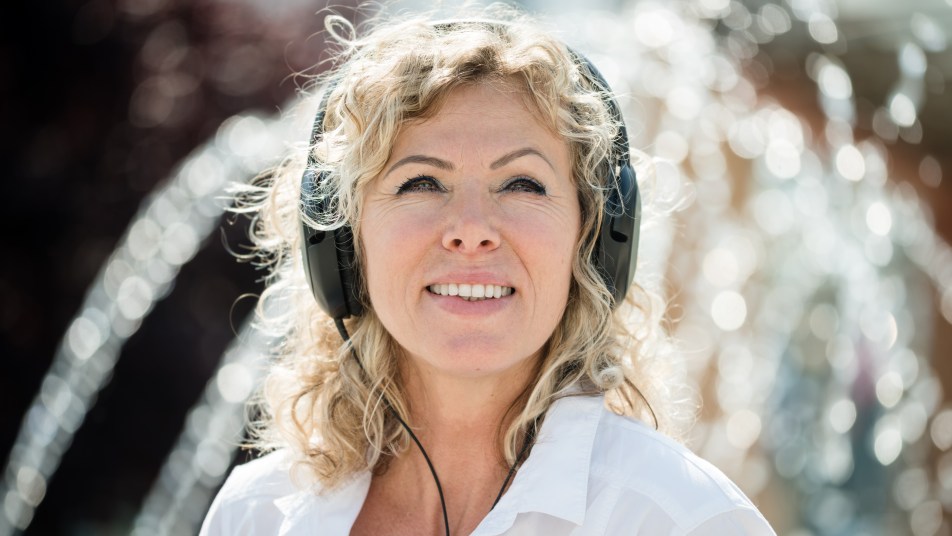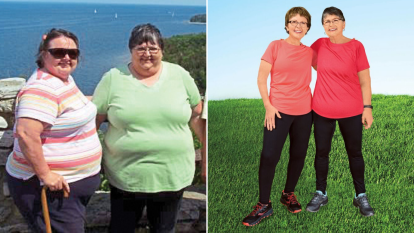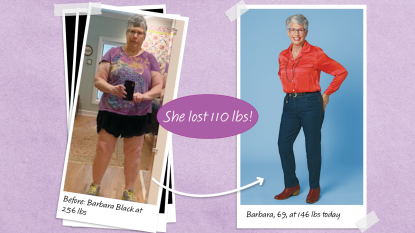This Activity Can Help Heal Your Lungs if You Are a Covid ‘Long Hauler’

Emma MacPherson’s eyes filled with tears as she pulled out a piece of paper and a pen, readying herself to write her final goodbye to family and friends. I don’t want to die, she thought, hopelessness filling her heart as she struggled to find the words to say. It had been months since the Orange County, New Yorker had contracted covid-19, but from the day she began feeling sick, things had gone from bad to worse.
It had all started in March 2020, when Emma came down with a dry cough and what she thought was a stomach bug. Soon her cough turned into shortness of breath and a burning feeling in her lungs. By April, Emma’s doctors had confirmed that she’d contracted covid-19 and begun treatment. But as she’d battled new symptoms like chills, sweats, and a racing heartbeat, Emma, who lived alone, had feared the worst.
Five months into her diagnosis, despite multiple treatments and endless doctor visits, she was still fighting to breathe. Doctors had hoped breathing exercises would help, but it was agony for Emma to do them. “My lungs feel like they’re on fire,” she’d say, before losing her voice and collapsing into a fit of coughing.
In August 2020, doctors told her to schedule a virtual visit at Mt. Sinai Hospital, which was where Emma was first classified as a covid “long hauler” — someone who had not recovered months after covid.
“There are so many like you,” her doctor said. And after Emma explained the difficulty she had doing breathing exercises, the doctor suggested she try a free virtual music therapy class to learn gentler breathing techniques. That doesn’t sound too hard on my lungs, Emma hoped. Maybe singing is key to my healing.
Breathing Free
Emma soon signed up for a free 1-hour Zoom class with music therapist Tom Sweitzer. Tom, who was also a covid long-hauler and had set up the class for those like him, asked the participants in Emma’s first class to raise their hands above their head and stretch as they breathed in and out. This is the most physical activity I’ve done in months, Emma realized with surprise.
Then, as the participants introduced themselves, Tom shared songs for them to sing on mute (so no one had to be embarrassed) with simple melodies and short phrases, like “What the World Needs Now Is Love,” and “High Hopes.”
Tom also played the piano and asked people to share their experiences with covid, as well as moments of hope in their days since being diagnosed. Emma was shocked that she sang and spoke through the whole class without losing her voice or feeling short of breath. She even felt her anxiety lift.
Amazed, Emma learned that there was science to support her progress: Studies showed that the combination of movement, vocal exercises, and gentle breathing had dramatically improved lung function in patients with similar breathing issues like COPD and asthma.
Emma attended the class each week along with respiratory therapy through the Post Acute COVID-19 program, and today, her breathlessness and burning is all but gone and she’s able to sing the most difficult songs.
“I’ve come such a long way!” the 63-year-old says with a smile. “I didn’t think I would make it, but now I am 80 percent better. It’s all thanks to Tom’s class and the people in it, who, with each step they took in their recovery, gave me the hope that I will get back to 100 percent. Singing is helping me heal not just my lungs but my mind, heart and soul!”
Heal Your Lungs With the Power of Song
Studies show that singing can increase lung function by 50 percent, slash anxiety by 55 percent and dramatically boost memory — and Tom Sweitzer, co-founder of A Place to Be music therapy, has seen the benefits firsthand. “Music therapy is a joyful tool for emotional and physical healing,” he says. Here, his steps to singing your way to healthier lungs:
Pick a slow song.
“First, lie on your back, choose a slow song and let yourself just breathe along with the music,” says Tom. “Then sing along, taking a deep breath in at the beginning of each line, and letting it out at the end.”
Try a kid’s tune.
When you feel like you’ve conquered that, move on to your favorite children’s song, like “Mary Had a Little Lamb.” “Sing as much of it as you can in one breath,” Tom says. “Each day, see if you can sing longer without having to breathe in.”
Get moving.
“Then choose a song with a good walking rhythm and breathe along to it as you walk,” Tom says. “To challenge your lungs, sing it while you walk!”
This article originally appeared in our print magazine.













